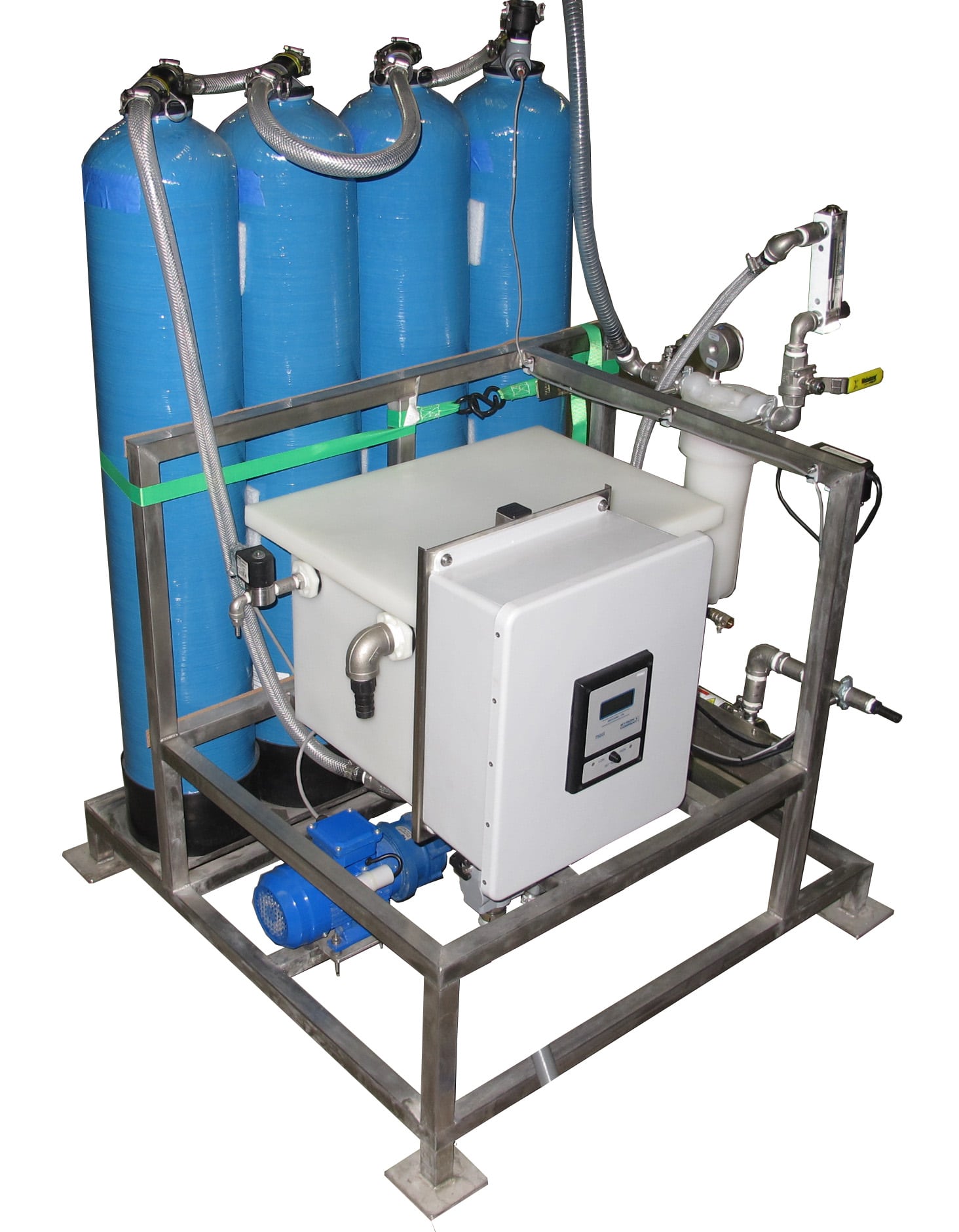Obtaining Zero-residue Cleaning Results
The final quality of the cleaning results is largely determined by the quality of the rinsewater in use. If zero-residue cleaning results are required, the system purchased will require 2 or more rinse tanks designed with Reverse Cascade Overflow, and the system must be connected to a deionized water supply, or reverse osmosis water supply.
Deionized water is water that has been purified to remove all dissolved solids. When water evaporates from the surface of parts, ONLY the water evaporates, and any dissolved solids such as calcium will dry on the surface of the product, thereby producing unacceptable cleaning results. However, deionized water has NO dissolved solids. Therefore, when it dries, no residues are left behind.
Residues can also be deposited onto parts if the cleaning process fails to adequately remove the contaminants from the parts. In these instances, it will not matter how pure the water is. The parts will not be adequately cleaned. Oscillation Systems, or CROSSFIRE Multiple Frequency Ultrasonic Systems can greatly improve the cleaning results for most applications, and is highly-recommended for applications requiring zero-residue cleaning results.
One difficulty encountered with the use of deionized water is drag-out of detergents from the cleaning fluid into the rinse water. Detergents in the FINAL rinse bath will produce residues on parts after cleaning. Keeping the water quality very high in the final rinse tank is required for zero-residue cleaning results, and is one of the reasons why Zenith offers Automated Rinse Water Quality Maintenance Systems which automatically maintain the rinse water quality to guarantee zero-residue cleaning results.
For more information regarding how to select the appropriate number of rinse tanks for a given application, see the General Guidelines or Rinse Importance web pages.
Important points regarding zero residue cleaning results
Require the Use of Purified Deionized or Reverse Osmosis Water.
- Requires the Use of at Least 2 Rinse Tanks with Reverse Cascade Overflow.
- The Quality of Water in the Final Rinse Tank is Most Important.
- Require that Detergent Drag-out is Minimized to Prevent Detergent Spotting
- Can be Easily Obtained with Optional Automatic Water Quality Maintenance Systems


